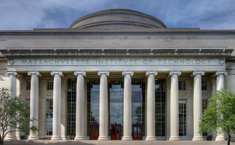
Project: Plant Barry
Company/Alliance: Southern Energy, Mitsubishi Heavy Industries (MHI), Southern Company, SECARB (US DOE's Southeast Regional Carbon Sequestration Partnership) and Electric Power Research Institute
Location: Plant Barry Power station, Mobile, Alabama, US
Feedstock: Coal
Size: 25 MW slip stream (0.1 to 0.15 Mt of CO2 captured annually)
Capture Technology: MHI amine based process called called KM-CDR, and utilizes MHIA’s KS-1 solvent
CO2 Fate: Sequestration into the Citronelle oil field
Timing: Capture started June 2011; Storage started in 2012
Scale Up: 160 MW: 1Mt of CO2 /yr. It is unknown if this project will go ahead
Motivation/Economics:
Carbon dioxide is captured using the KM CDR Process® capture technology, developed by Mitsubishi Heavy Industries Ltd. The carbon from a 25-megawatt slip of flue gas reacts with an amine solvent before being captured, isolated and compressed into a liquid, preparing it for pipeline transport.
Southern has not provided a cost estimate for this project. DOE awarded $295M in December 2009 for an 11 year CCS contract as part of the CCPI funding - see below.
Southern Company received $15 million from the US DOE in August 2011 to cover part of the cost of installing a heat exchanger at Plant Barry in Alabama. This was part of $67 million which was awarded to 4 projects to research into reducing CO2 emissions.
Comments:
Plant Barry successfully started capturing CO2 in June 2011 and sequestering the CO2 underground in August 2012. Southern Company started a test of capturing CO2 from one its subsidiary power plants: Plant Yates near Newnan, Georgia in September 2010. The pilot-scale project at Plant Yates, which uses a capture system developed by Mitsubishi Heavy Industries provided additional process improvements before the technology was demonstrated at the larger 25 MW scale at Plant Barry in 2011.
Southern Company's Plant Barry was part of the original group of projects to receive third round CPPI funding in December of 2009. One million tons of carbon was to be captured per year and stored underground in the saline formations of the Citronelle oil field.
Southern Company withdrew its Alabama Plant Barry project from the CCPI program on February 22, 2010, slightly more than two months after DOE Secretary Chu announced $295 million in DOE funding for the 11-year, $665 million project that would have captured up to 1 million tons of CO2 per year from a 160 megawatt coal-fired generation unit. According to some sources, Southern Company’s decision was based on concern about the size of the company’s needed commitment (approximately $350 million) to the project, and its need for more time to perform due diligence on its financial commitment, among other reasons.Southern Company continues work on a much smaller CCS project that would capture CO2 from a 25 MW unit at Plant Barry.
Project Link: MHI, Southern Company mark success with CCS demo at coal-fired plant (January 2014)
Other Sources and Press Releases:
Carbon Capture and Sequestration: Research, Development, and Demonstration at the U.S. Department of Energy (June 2013)
CCS Project at Plant Barry Begins Storing CO2 Underground (August 2012)
Southern gets $15M for carbon capture project (August 2011)
Mitsubishi begins CO2 capture at Plant Barry (June 2011)
Southern's Plant Barry is successfully capturing CO2 (June 2011)
Ground breaking of CCS project (April 2010)
Construction starts on steam plant (April 2010)
Southern pulls out of DOE project (February 2010)
DOE awards $295M (December 2009)
DOE announces news of SECARB's involvement in CCS project (July 2009)
Southern to test MHI carbon capture technology (May 2009)